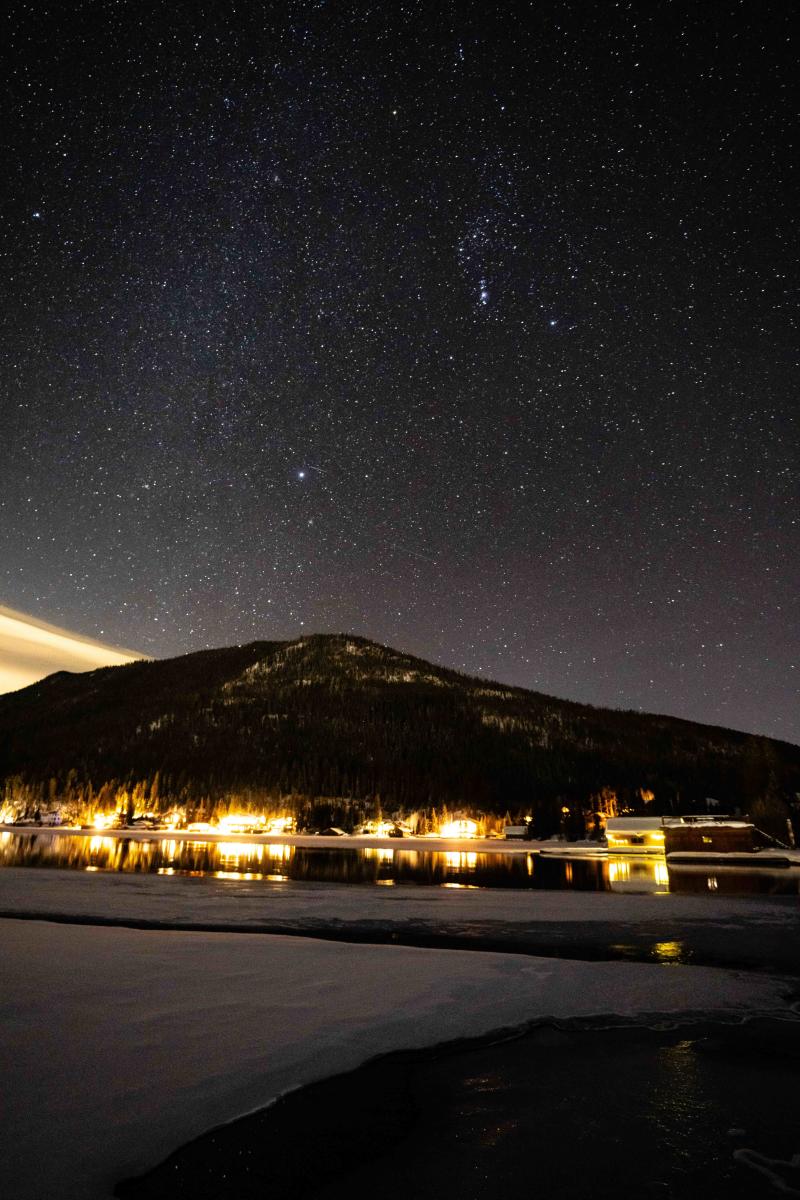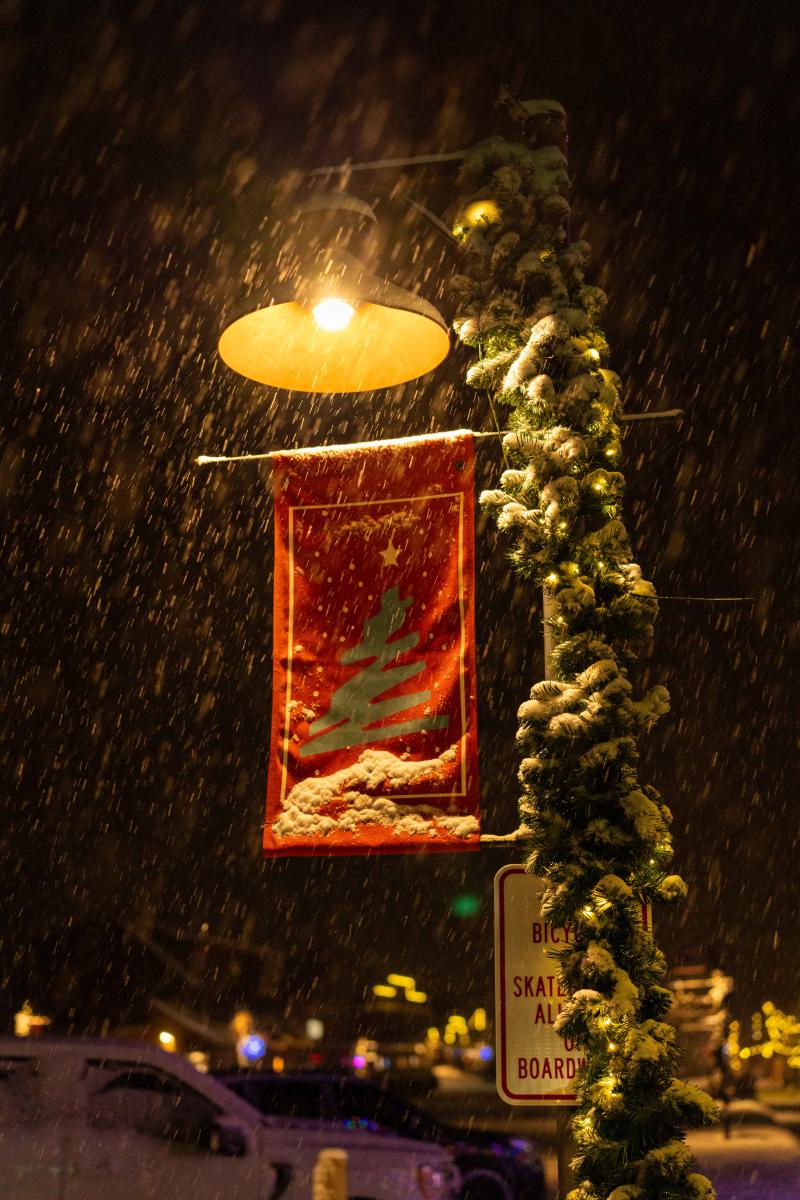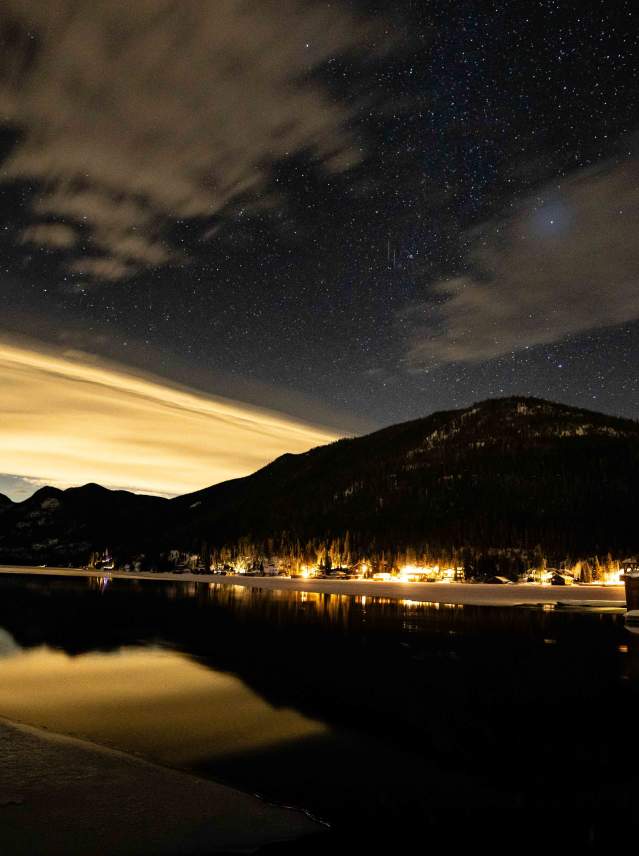Stargazing in Grand Lake, CO: Your Guide to the Dark Skies
Between wildlife, meandering trails, and alpine lakes, there’s a lot to keep our attention on the ground while exploring in Colorado. But don’t forget to look up: Thanks to our expansive open spaces, the region is an exceptional stargazing destination. Grand Lake is among the best spots in the state to experience the vastness of the Milky Way because of our limited light pollution, small population, high elevation, and proximity to Rocky Mountain National Park.

Stargazing Spots in & Around Grand Lake
A short drive brings star-seekers to many serene locations where they can idle under the dark skies (and maybe see a shooting star). Rocky Mountain National Park is an obvious destination for stargazers. The Kawuneeche Valley offers broad open skies and a slower pace than the east side, with access along the Trail Ridge Road. The highest, continuous paved road in the United States is dotted with above-treeline overlooks that offer clear sightlines into the heavens, including the Farview Curve, Milner Pass, and the Medicine Bow Curve.
In the summer, RMNP rangers lead several astronomy–focused programs. Moonlit snowshoe walks are also added to the calendar in the winter. Trail Ridge Road, which usually connects Grand Lake and Estes Park, is only fully open seasonally (generally late spring through early autumn). In winter, the road closes beyond the Colorado River Trailhead but remains open for about 10 miles on the west side, providing access to numerous trails. Closer to town, Point Park, the beach adjacent to Headwaters Marina, and Green Ridge Campground are all easy-to-reach spots with limited light pollution.

When to Visit for Clear Night Sky Views
Stargazing is a year-round endeavor, but the darkest skies and best visibility typically occur during or near the new moon phase, which generally falls in the second half of every month. Wait for a clear, cloudless night for the most impressive sightings.
If possible, time your visit to coincide with a meteor shower for an even more spectacular display. Major celestial events include the Orionids, Leonids, Geminids, and Perseids meteor showers. And don’t discount winter, which brings longer nights and colder, drier air, ideal conditions for engaging with the night sky.
Tips for an Amazing Stargazing Experience
Yes, you can take in the Milky Way with your naked eye, but there are a few things that will help amplify the experience and make it more comfortable. Start by limiting your use of light, and aim any light source downward when you do need it. Better yet: Get a red light–equipped flashlight or headlamp, which won’t impact your night vision or blind other stargazers.

Give your eyes at least 30 minutes to fully adjust to the darkness. A star chart or stargazing app can help you identify what you’re seeing. Plan to stay out for a while, especially if you hope to catch a meteor shower, and bring warm layers and blankets since temperatures can drop sharply after sunset at high elevations. Also, be aware of wildlife and remain in known pull-outs or marked parking areas.
Before night falls, experience all that Grand Lake has to offer in the daylight: take a hike or a snowmobile ride, rent a boat to explore our three area lakes, catch a free concert, or snuggle up fireside in your lakeside lodge. The quiet beauty of the star-filled sky will be the cherry on top of a perfect day. Start planning your visit and see how the stars transform the view.
